The charming old city of Guanajuato, located in the very center of Mexico and the state's capital, has long been a favorite vacation spot for non-Mexicans as well as a desirable place to live permanently. Due to its valley setting, Guanajuato's streets have many small, twisting roads and alleyways that, because of their width and number of steps, are frequently only appropriate for pedestrian traffic.
This charming UNESCO World Heritage Site is home to a lot of little plazas, churches, and homes from the colonial era made of pink or green sandstone, as well as a lot of great museums and art galleries.
This lovely colonial city offers a multitude of things to do and is home to world-class events like the Festival Internacional Cervantino, which draws artists from all over the world each fall.
The amazing attractions of Mexico City are a simple four-hour drive to the north, making it a delightful place to spend the night or just a day.
With this list of the best things to do in Guanajuato, you can explore the attractions of this lovely city.
1. Kissing Lane and the Jardin de la Union
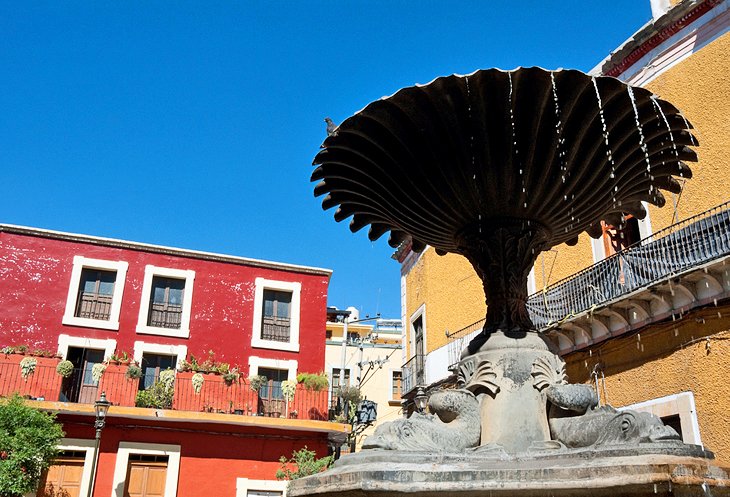
The Jardin de la Union, the city's central square, located at the center of Guanajuato's historic district. This attractive plaza, which is constantly busy and has fountains and flowerbeds, is surrounded by many hotels and restaurants, making it the ideal starting point for excursions into the rest of the city.
It's also where you'll find a variety of architectural marvels, from the lovely ancient Baroque San Diego Church to the imposing Juárez Theater (Teatro Juárez), which dominates the square (check out the church's museum for its history of the former convent as well as that of the city).
The Plazuela de Los Angeles, which leads to the Callejón del Beso, also known as the Kissing Lane because it is so narrow that a loving couple can kiss from windows on opposing sides, is well worth exploring. Nowadays, it's common for couples to make their way up to step three (as the alley gets narrower and turns to the right) and seal their enduring love with a kiss.
2. Digging Deeper: Tunnel Exploration in Guanajuato
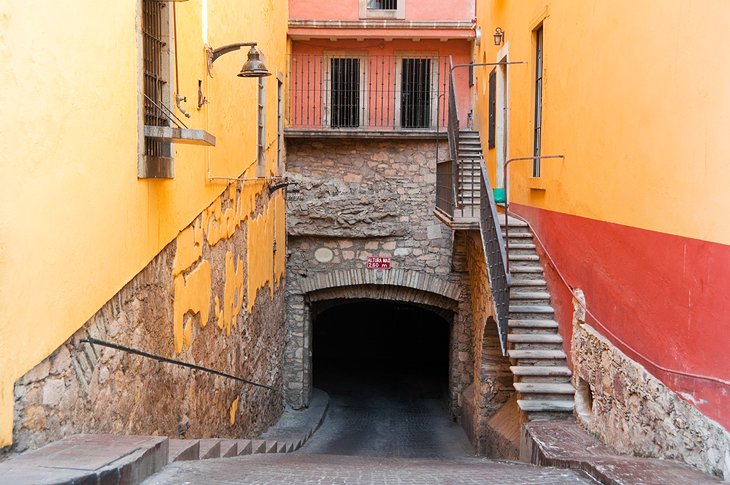
A highlight of a Guanajuato walking tour is exploring the incredible network of underground streets and lanes. The tunnels, which were built out of necessity to manage the frequently-flooded Guanajuato River (Rio Guanajuato), which once flowed beneath the city, were rendered useless once a nearby dam was built to regulate the river upstream.
The vast network of tunnels that were still in existence were effectively used as roads, which relieved the clogged streets above ground and improved their safety and appeal to pedestrians.
In addition to providing space for vehicles, these cobblestone streets have numerous clearly marked walkways that are enjoyable to explore. The tunnels are a must-see attraction and can help save time if you need to move from one area to another quickly (but make sure you have a map with you!). They are accessible through stone staircases at several spots throughout the ancient city.
Teatro Juárez 3.

The stunning Juárez Theater (Teatro Juárez), Guanajuato's opera theater, dominates the charming Jardn de la Unión, the city's central square.
This magnificent neoclassical building, which took about 30 years to complete, was completed in 1930. It is notable for its enormous Doric columns supporting a Romanesque portico decorated with nine bronze statues of the Greek muses, as well as the steps leading up to the building, which are a popular gathering place for both locals and tourists.
You should also check out the lavish Art Nouveau interior of the building, which features ornately gilded furnishings, beautifully carved wood, and stained glass. This is especially true if you can do it while seeing one of the theater's regular musical or dance performances.
4. The Our Lady of Guanajuato Basilica

The sandstone-colored Baroque Basilica Colegiata de Nuestro Seora de Guanajuato, also known as Peace Square's (Plaza de la Paz) Peace Square, is a must-see. The highly respected statue of the Madonna of Guanajuato, which dates to the seventh century and was significantly altered later, is housed in this magnificent building that was constructed in the 17th century. King Philip II of Spain gave the city this carved wooden statue on a silver base in 1557.
The church, which is by far the biggest structure in Guanajuato, owes a great portion of its beauty to the local miners who supported its construction. This relationship is still celebrated today with yearly miners' parades and offerings to the church's patron saint.
Together with its well-known statue, the church's other highlights include its charming tower, the countless relics on the main altar that were gifts from the Pope, and a significant collection of works by well-known Mexican painters.
The 1773-built Templo de Belén, which is notable for its Churrigueresque façade, and the Templo La Valenciana, which is notable for its three magnificently huge altars, each of which has been lavishly embellished in gold leaf, are other old churches that are worth visiting.
Alhóndiga de Granaditas, No. 5
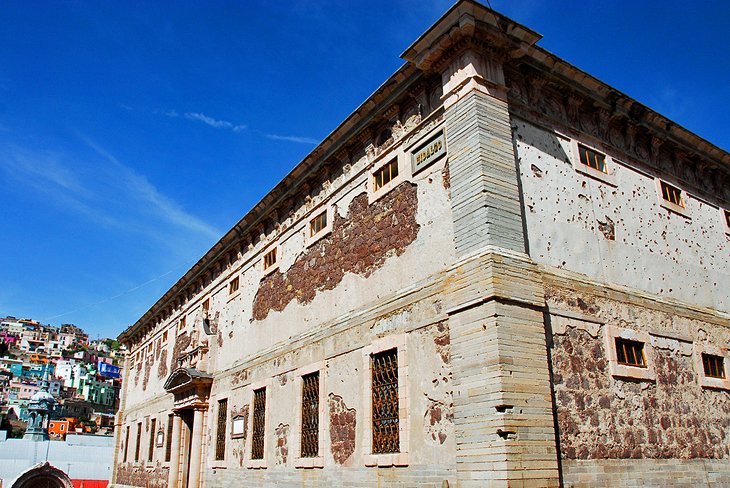
One of the biggest and most intriguing of Guanajuato's old secular structures is the Alhóndiga de Granaditas, which was finished in 1809.
The structure, which was originally intended to be a granary but later doubled as a market, was used as a fortification by the Spaniards and their loyalist allies until it was seized by Miguel Hidalgo's army in the first defeat of the colonialists who had governed Mexico for generations. A statue honoring the occasion and Hidalgo's contribution stands in a hillside park close by that is reached by a funicular railway, and it provides a view of the city.
With its exhibits on the war and Hidalgo's death, in which his head and those of his fellow countrymen were displayed for everyone to see, the structure is currently the home of the Guanajuato Regional Museum.
The museum houses a sizable collection of Pre-Columbian antiquities in addition to its displays of items from the colonial era.
6. The Guanajuato Mummies
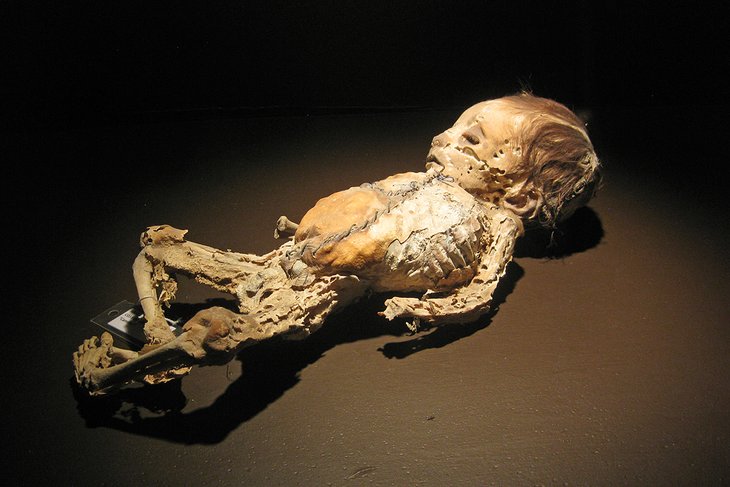
The Mummies of Guanajuato, however a little gory, have established themselves as one of the city's most well-liked attractions and continue to be a significant cultural phenomenon connected to regional customs and traditions.
The Mummies Museum (Museo de las Momias de Guanajuato), which houses the naturally mummified remains of locals who died during a cholera outbreak in the middle of the 19th century, was founded after the bodies were unearthed between 1865 and 1958 because the relatives of the deceased failed to pay cemetery taxes. The curious were paid a modest fee by enterprising cemetery personnel to view the mummies, and as word of the attraction spread, travelers from far and wide began to arrive.
The knowledge that some of those buried were still alive at the time, hence the occasionally frightful expressions on their faces, adds to the fairly macabre presentation. The museum claims to house the smallest mummy in the entire world, a fetus, in addition to a few dressed mummies.
7. Museo Iconográfico Del Quijote
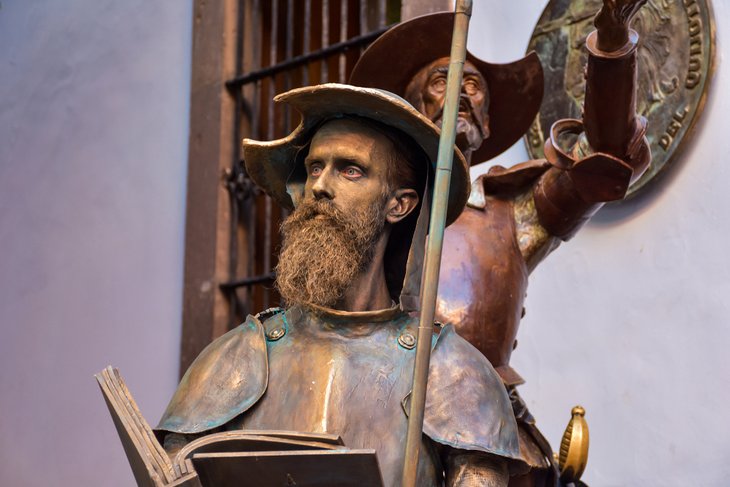
The Quixote Iconographic Museum (Museo Iconográfico Del Quijote) honors Mexico's long-standing interest in the works of Spain's Miguel de Cervantes and is easily recognized by the statue of its namesake that stands warmly by its entrance.
The museum is well worth the time spent exploring, with a focus on exhibitions of artwork and objects connected to Cervantes' most well-known work of fiction, Don Quixote.
Highlights include countless paintings and statues, as well as tapestries and various items that may be purchased commercially that relate to the story. The International Cervantino Festival, which honors Cervantes's works each October at the Teatro Juárez and other venues throughout the city, is also noteworthy.
8. The Guanajuato University
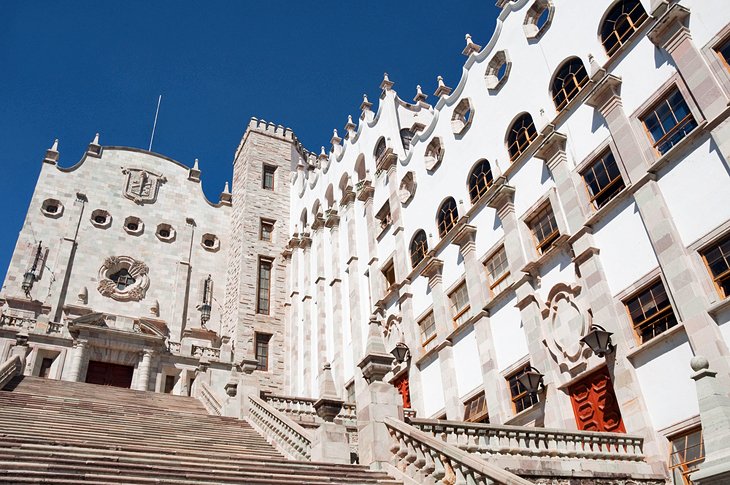
The beautiful University of Guanajuato's city center location, which was constructed by the Jesuits as a school in the 18th century, first welcomed students in 1828 and is still the oldest institution in Latin America. The institution is well worth the effort to visit, even just to view the famed stairway leading up to this excellent neoclassical structure, which is only a short distance from Peace Square (Plaza de la Paz).
#Volunteer in #Mexico. #Environmental and #social activities in #Queretaro and San Miguel de Allende, #Guanajuato: https://t.co/PqmX9aLZGD pic.twitter.com/XdUVsGJdXu
— Volunteer Programs (@CADIP) May 13, 2018
If you're up for it and can manage the 113-step climb, you'll be able to see some of the magnificent interior of the structure when you visit the university's old cathedral and natural history museum.
9. La Valenciana Mining in Silver City
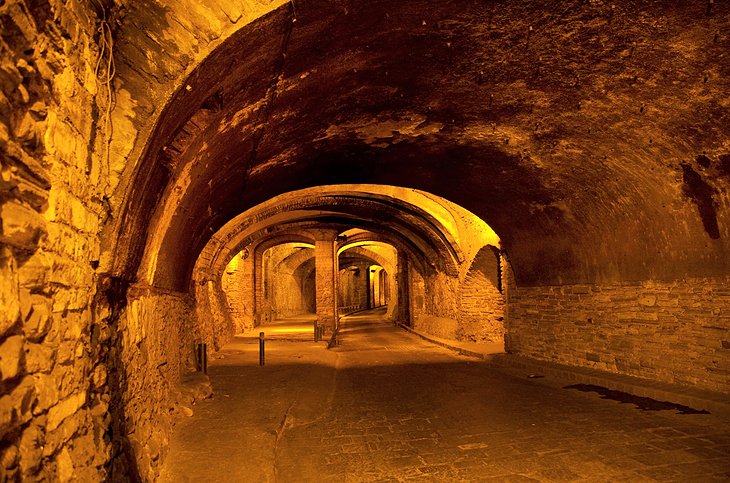
Guanajuato has a long history with mining. It was once the center of Mexico's silver mining industry and produced 80% of the nation's silver. These historic mines, some of which date back to the mid-1600s, are now listed as a UNESCO World Heritage Site and are accessible to tourists visiting Guanajuato because they are located just a short drive from the city in the community of La Valenciana.
Much of Guanajuato's prosperity and the exquisite architecture that came with it may be attributed to La Valenciana. Currently, as part of an English-language guided tour, visitors to the La Valenciana Mine (Mina La Valenciana) get the opportunity to don a mining hat and explore the historic pits. A multitude of caverns, drilling machinery, historical objects, and instruments from various eras are among the highlights.
Visit the lavish San Cayetano Church (Templo de San Cayetano de La Valenciana) afterward. Its exquisite 18th-century basilica is renowned for its ornately gilded altars, sculptures, and artwork.
10. The International Cervantino Festival, or El Cervantino

The annual International Cervantino Festival brings life to the lovely city of Guanajuato, which is already a popular tourist destination all year long.
This October celebration of the works of Spanish author Miguel de Cervantes Saavedra, best known for his epic work Don Quixote, draws upwards of 200,000 visitors to see a variety of performances of art, music, and theater, with key events held at magnificent venues like Teatro Juárez, in addition to about 50 other locations throughout the city.
Some city institutions hold related exhibits in addition to the performances, and many cafes and restaurants participate by offering special menus and hosting demonstrations that honor Spanish culture from all over the world.
11. Cerro del Cubilete and Cristo Rey
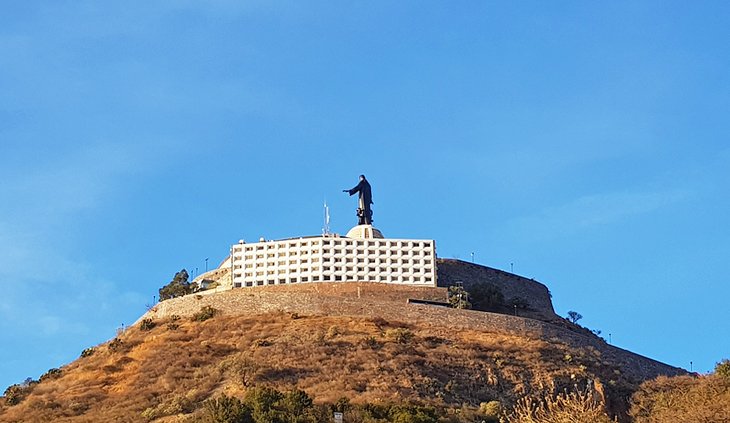

Cristo Rey, a massive statue of Jesus Christ, is perched atop Cerro del Cubilete, an amazing peak rising about 2,700 meters above sea level. The location, which is the geographic heart of the nation and a wonderful half-day excursion from Guanajuato, is regarded as one of the most important religious places in all of Mexico.
Built in the Art Deco style on top of a smaller monument that was demolished in 1928, the statue itself is 23 meters tall and was finished in 1950. A massive metal dome over an altar with a large crown dangling from it, representing the one supposedly worn by Christ, is one of the building's most notable features. The shimmering natural light that filters through the dome's cracks gives the experience an unearthly feel.
Later, take some time to unwind and take in the breathtaking views of the surroundings, which are especially beautiful after sunset.
12.The Diego Rivera Museum and Home
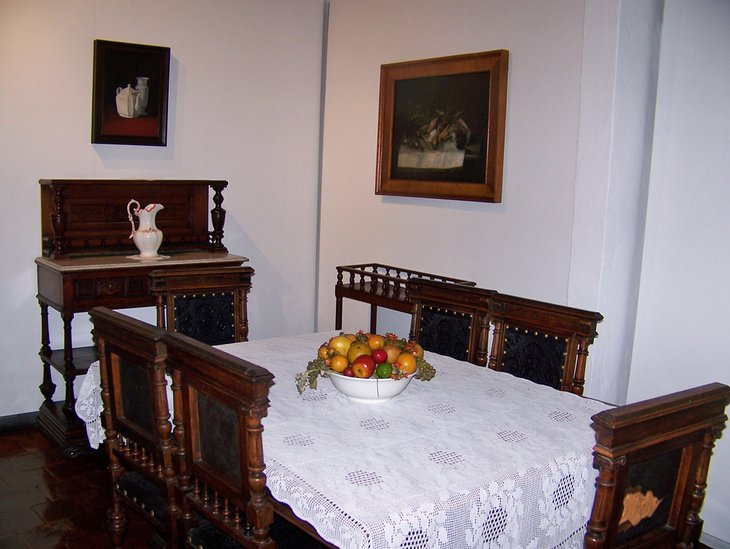

Famous Mexican artists Frida Kahlo and Diego Rivera's tumultuous marriage has been depicted in several works of art over the years.
The strength, power, beauty, and tragedy of Mexico are represented by Frida Kahlo as symbols. Her husband, Diego Rivera, is the most well-known muralist in Mexico and a representation of the nation's strength. Even though they experienced hardship and sorrow together, they are unquestionably one of the most well-known couples in Mexican history.
Without a visit to the Diego Rivera Home and Museum, a trip to Guanajuato isn't complete. He and his identical twin brother, who passed away soon after birth, were both born in this very structure in 1886. Under the direction of his daughter, Guadalupe Rivera Marin, the structure was renovated in the 1970s, and in 1975 it was designated as the Diego Rivera House Museum.
Visitors can explore the restored interior spaces that represent the early years of Rivera's life. Portraits of Frida Kahlo and his mistress, Dolores Olmedo, can be found in works of art. His pictures, pencil and ink sketches, and enlarged versions of his more well-known murals are among his further creations.
13. The Funicular in Guanajuato
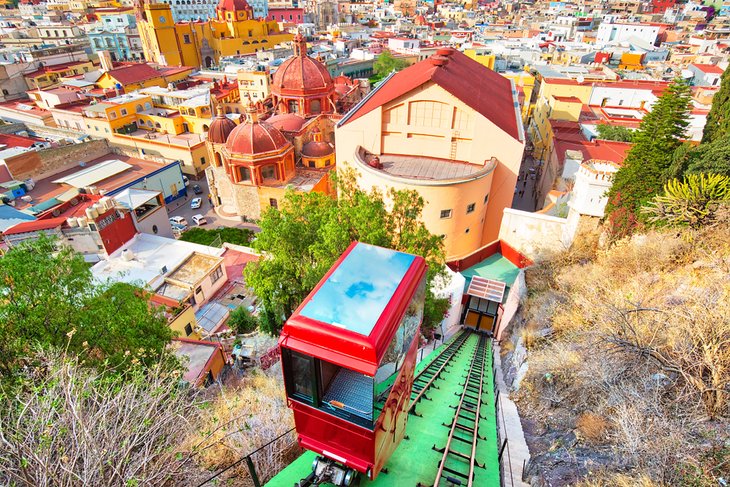
From above, Guanajuato may be seen in some of its most beautiful angles. Looking out over the intricately painted structures, old rooftops, and church towers evokes a strong sense of location. You receive the distinct impression of having found Mexico's true heart and one of its pearls.
It makes aerial views of Guanajuato the best option. Use the funicular. A cable-car elevator system called a funicular is made to climb steep inclines. The funicular in Guanajuato was built in 2001 and is situated behind Theatre Juarez.
14.Mercado Hidalgo
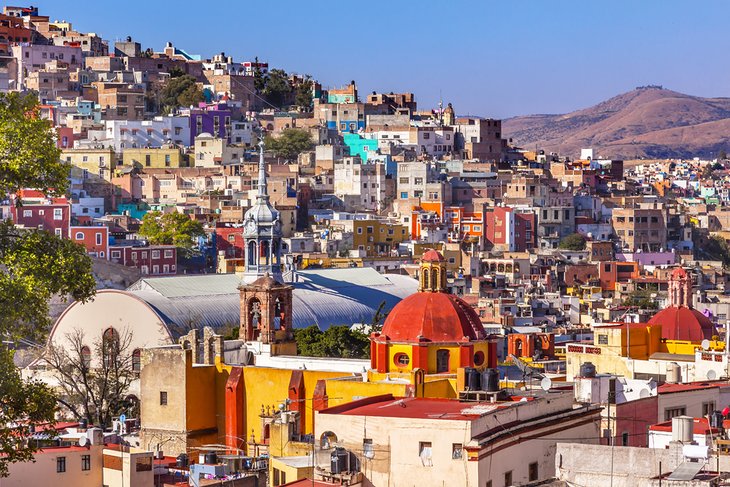
The market scene in Mexico is well known on a global scale. Mexico is home to some of the world's top markets, and Guanajuato is no exception. The Mercado Hidalgo, the most well-known market of Guanajuato, is located inside a typical iron structure. A bustling assortment of vendors that offer anything from vegetables and food to crafts, leather, and souvenirs can be found inside the market hall.
The market hall offers more than just a fascinating look into Guanajuato's daily life; it also has a fascinating past. It was initially meant to serve as a railroad depot, helping to establish Guanajuato as Mexico's commercial center. But because the plans to complete the station never came to fruition, it was converted into a market in 1910.
The station was called Miguel Hidalgo, one of the founding fathers of Mexico's independence, because its opening coincided with the commemoration of Mexico's 100th anniversary of independence from Spain.

